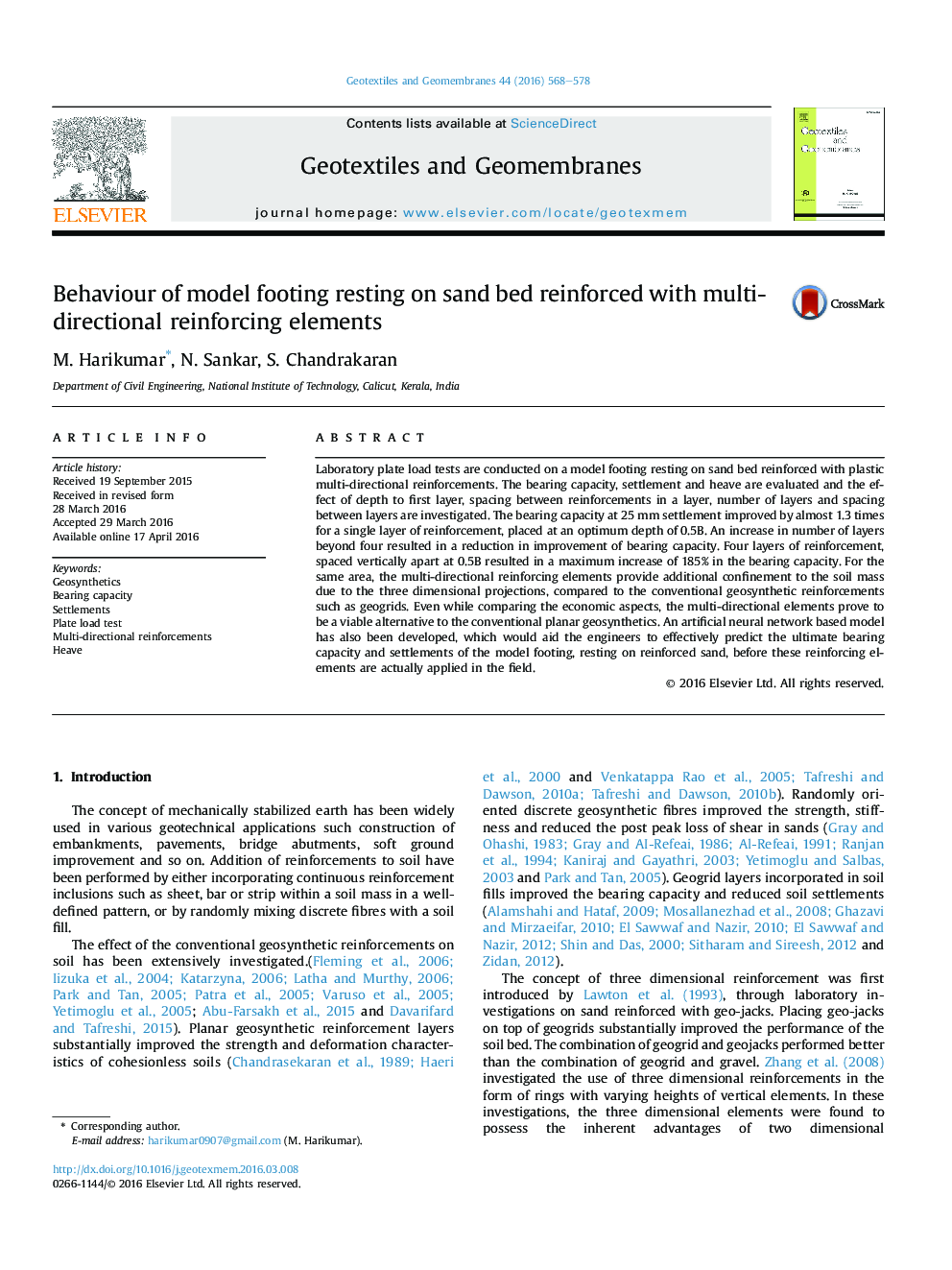| Article ID | Journal | Published Year | Pages | File Type |
|---|---|---|---|---|
| 274026 | Geotextiles and Geomembranes | 2016 | 11 Pages |
Laboratory plate load tests are conducted on a model footing resting on sand bed reinforced with plastic multi-directional reinforcements. The bearing capacity, settlement and heave are evaluated and the effect of depth to first layer, spacing between reinforcements in a layer, number of layers and spacing between layers are investigated. The bearing capacity at 25 mm settlement improved by almost 1.3 times for a single layer of reinforcement, placed at an optimum depth of 0.5B. An increase in number of layers beyond four resulted in a reduction in improvement of bearing capacity. Four layers of reinforcement, spaced vertically apart at 0.5B resulted in a maximum increase of 185% in the bearing capacity. For the same area, the multi-directional reinforcing elements provide additional confinement to the soil mass due to the three dimensional projections, compared to the conventional geosynthetic reinforcements such as geogrids. Even while comparing the economic aspects, the multi-directional elements prove to be a viable alternative to the conventional planar geosynthetics. An artificial neural network based model has also been developed, which would aid the engineers to effectively predict the ultimate bearing capacity and settlements of the model footing, resting on reinforced sand, before these reinforcing elements are actually applied in the field.
